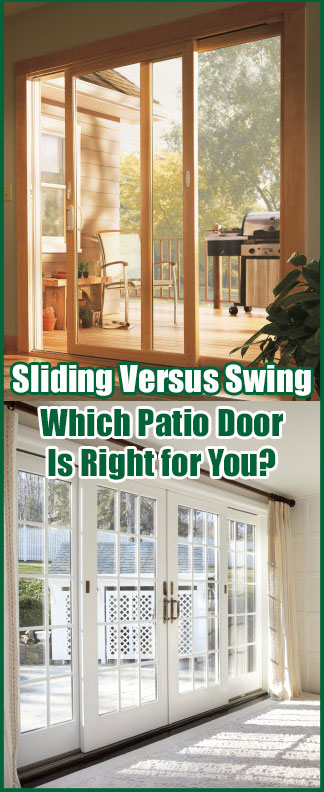

When it comes to replacing exterior doors in your New Jersey or New York Metropolitan home, Renewal by Andersen has several styles to maximize comfort and safety. Our custom-crafted sliding doors and traditional swing-out French-hinged doors offer high-performance and safety features that deliver added peace of mind in a beautiful package. But, which style is best for you and your family? Here are a few differences and similarities to help you decide.
The Similarities of Sliders and Hinged Replacement Doors
Doors make a statement about you, your view of the world and your personality. Designing your entrances and exits is an opportunity to complement your home’s unique architectural individuality and characteristics. Entry points may blend into the overall aesthetic of your home or provide a “stand-out” feature that attracts the eye. You can have confidence that whichever style you choose, you’ll enjoy many years of dependable service in a beautiful, low-maintenance package created to help you control your indoor environment and improve energy-efficiency. Plus, our exclusive 20/2/10 warranty covers you for parts, installation and labor, and is fully transferable if you sell your home in the future.
Decorative features to enhance your access points
Improving energy-efficiency and comfort doesn’t mean you have to forego style or your view on the world beyond, or behind, your doors. Sliding doors are designed to maximize your viewing area. If you have a spectacular view beyond the glass, or you want to have a clear range of vision of your children or grandchildren playing in the backyard, gliders are a wonderful choice. On the other hand, French-style hinged doors are all about making a decorating statement. French-style sliding doors give you the best of both worlds – a touch of traditional elegance and a broader view.
Decorative features like trim and frame width, hardware finishes, colors and optional grilles let you customize your replacement doors to represent your personality and lifestyle. Glazing choices allow homeowners to incorporate ornamental elements as well as enhance privacy and security. Patterned glass, typically installed in fixed windows to add visual interest or prevent people from seeing inside, give sliding doors an artistic element that clear glass panels don’t offer. However, if you want to create a stunning entrance with a distinct appearance, we offer four designs that will help you accomplish your decorating goals, while adding privacy and light control.
Other glazing options allow you to enhance energy efficiency, control visible light transfer and almost eliminate harmful UV rays that may damage indoor furniture, drapery and carpeting, without restricting your view.
The Differences Between Sliding Patio Doors and Hinged Replacement Doors
Easy-care Sliding Patio Doors
Easy glide patio doors open smoothly and are perfect in areas where interior floor space is scarce or you don’t want to limit your furniture placement options. Homeowners also find sliding doors the best-fit option for access to a small porch or patio. Low-profile patio doors are custom-built to within 1/16 of the opening size left when we remove your existing windows or doors, so over-sized doors are an option for areas where traditional hinged-door style may not best the best choice.
Along with a broad color palette and an extensive selection of hardware choices for homeowners to personalize their doors, we offer two screen choices. All Renewal by Andersen windows come with standard screens, but we highly recommend TruScene insect screens for our New Jersey and New York Metro clients who like to open their windows and doors during late summer and early fall to enjoy an evening breeze. TruScene screens have micro-fine mesh that keeps even the dreaded no-see-ums from getting indoors.
French-Style Hinged Patio Doors
While we offer a French-style sliding patio door that has a slightly wider profile than the contemporary sliders, hinged patio doors create the traditional look and feel of old-world French décor. You may opt to configure the doors to swing-in or swing-out and add custom grilles to enhance the overall appearance or leave glass panels unembellished depending on your overall decorating scheme. You can even choose from single or multiple hinged configurations to get the exact performance features you want to fit your home. If you want the traditional look and feel of a French-style hinged door and don’t think you have enough space to make it work, ask a replacement window and door specialist to explain the many configurations available. You may be pleasantly surprised at just how many options you really have!
You never have to compromise or give up style and beauty to gain performance and durability with Renewal by Andersen home improvement products. If it’s time to replace your patio doors or you’re just looking for new doors to refresh your exterior appearance, we can help. Give us a quick call at (866) 609-5033 or fill in the short form on this page to schedule a no-obligation home consultation.

Learn Everything You Need to Know BEFORE Buying Replacement Windows